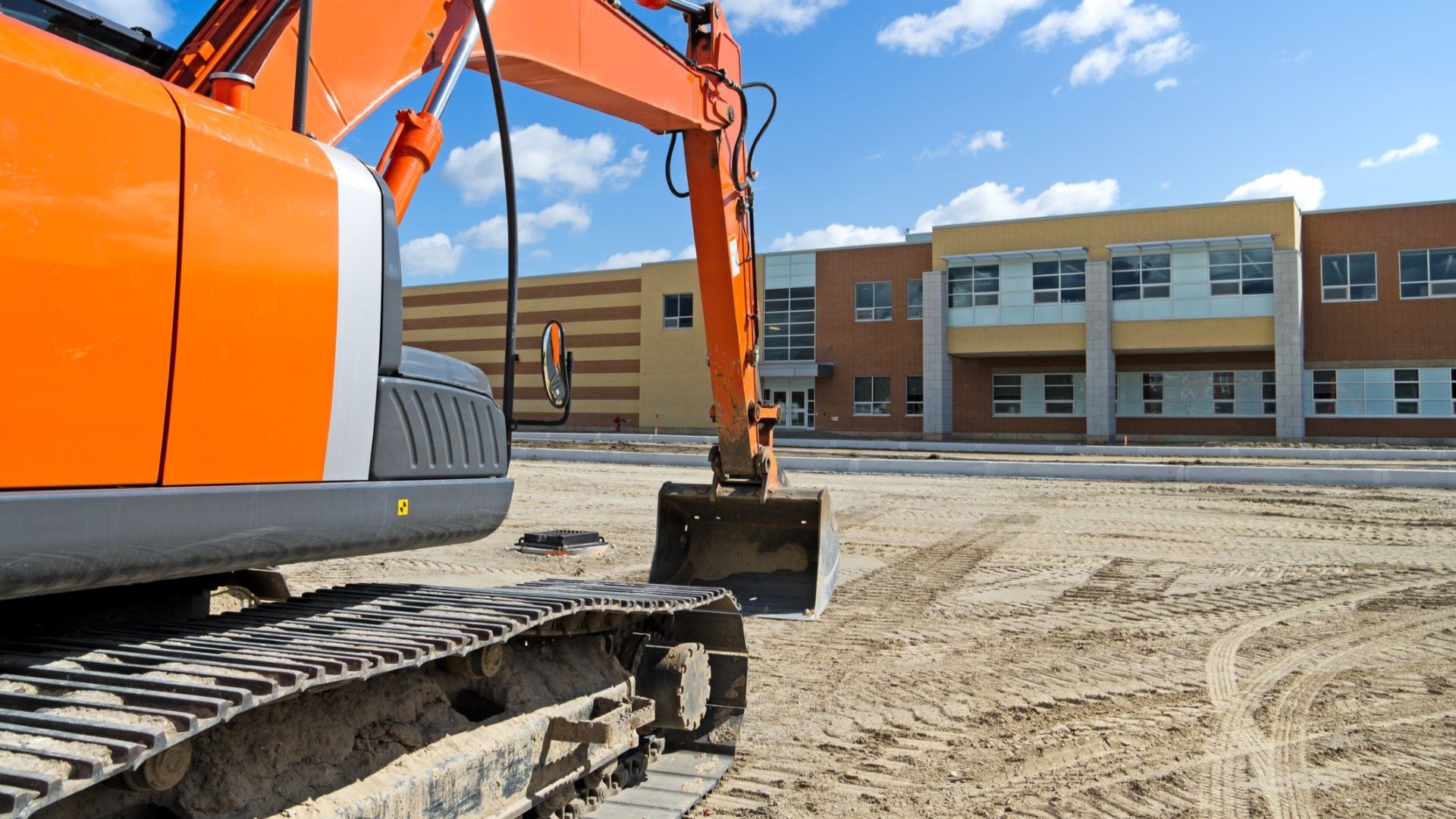Take Care During Campus Repairs and Construction

Construction and repair projects are a common sight on campuses of K-12 schools and higher ed institutions. Injuries can occur from falling objects, malfunctioning tools, trips over or falls from equipment, and more. Injuries can happen to workers on job sites or people just passing by.
If someone brings a claim for compensation, the issue of who owned or was responsible for site safety, equipment, or tools can be a critical question. For the safety of workers and passersby, implement comprehensive job site safety policies. And to mitigate liability risks, manage your contractor engagements so the delineation is clear if incidents occur.
Implement Comprehensive Policies for Institution-Owned Tools, Equipment, Vehicles
Items your institution owns should be in good working condition and not used by unauthorized people.
Create and follow policies that address:
- Inventory practices: Keep a detailed inventory of all institution-owned tools, equipment, and vehicles.
- Clear labeling: Visibly label tools and equipment so contractors don’t mistake them for their own.
- Routine upkeep: Set maintenance schedules for checking tools and equipment and updating or servicing items that need routine care.
- Safe storage: Assign storage areas for all tools, equipment, and vehicles and set requirements for securing these areas.
- Usage protocols: Ensure users of vehicles and dangerous equipment or tools are properly trained to safely use them.
Whenever possible, don’t let contractors and vendors use your institution’s tools, equipment, or vehicles. Instead, require them to use their own and maintain responsibility for them.
Address Tools, Equipment, Vehicles in Contracts
Ensure your institution’s contract approval process includes provisions regarding tools, equipment, and vehicles. Include your facilities professionals in establishing contract safety requirements for outside contractor work sites. Where possible, require all contractors to have a safety management system in place.
Document:
- Who provides the tools, equipment, and vehicles needed
- Who is responsible for storage and upkeep of those items while the contract is underway
- How the contractor’s tools, equipment, and vehicles will be secured and stored — both during use and non-work hours
- All institutional policies and safety protocols the contractor will follow with respect to tools, equipment, vehicles, and the work site
- Your mandated use of proper personal protective equipment
- Requiring full clean-up of the work site and removal of all tools, equipment, and supplies by the contractor at the end of the project
- Insurance coverage by the contractor that is sufficient for the project at issue and fully indemnifies your institution
Evaluate Additional Physical Premises Needs
Depending on the project, the work site may be set up for multiple days for short-term or long-term projects. Consider physical safety steps to implement or require of the contractor, including taking these actions:
- Use fencing, gates, and locks to keep unauthorized individuals out of the work site.
- Post signage with safety reminders and entry restrictions.
- Control access points and restrict entry to authorized personnel and vehicles.
- Install security cameras if appropriate.
- Evaluate whether additional lighting is needed to keep the work site properly illuminated.
- Assess whether specific aspects of the project (chemicals, electricity, etc.) necessitate additional precautions to protect workers and passersby.
Consider Other Campus Impacts
The presence of a work site or construction can impose on the campus community. Communicate about the project to avoid accidental entry by unauthorized people and follow all campus policies regarding safety and employment of third parties. Consider these steps:
- Ensure the contractor’s employees follow the requirements for third parties working on campus, including background checks, training, license verifications, and similar measures.
- Post information on your website about ongoing construction projects and road closures, including specifics about fencing and walking paths that may be interrupted.
- Post clear signage for detours and ensure campus transportation staff are apprised of changes to routes.
- Offer an interactive construction map if there is a considerable amount of construction on campus.
- Create a contact line for people to direct questions about construction or wheelchair-accessible routes around the work sites.
- Document all safety and security issues for remediation, analyzing trends, addressing them with the contractor, and reporting as required.
- Designate an institutional representative who is responsible for inspecting work sites for hazards and compliance with security measures.
More from UE
Contracts and Waivers Resource Collection
Improving Contracting on Campus: Allocating Risks Between Parties
About the Author
-

Christine McHugh, Esq., ARM
Associate Vice President of Risk Management
Christine is responsible for providing day-to-day management of the Risk Management department’s functional operations and works cross-functionally to advance the department’s ability to meet UE goals, objectives, and provide sound thought leadership to the educational community. Before being promoted to the role in June 2024, Christine was a Senior Risk Management Counsel. Her areas of expertise were employment law, sexual assault prevention, protection of minors, traumatic brain injury, and diversity, equity, and inclusion. Prior to joining the Risk Research team, she handled UE liability claims for several years. She previously practiced employment and higher education law.





